

Class, which refers to the technical difficulty of a route, ranges from Class 1 (walking on a well-maintained trail) to Class 6 (hanging from climbing gear while using engineering skills to ascend a cliff).
The phrase Hiking implies Class 1 or Class 2 (generally not needing hands for stability)
The phrase Scrambling implies Class 3, Class 4, or minimal Class 5 (generally needing hands for stability, but not ropes for safety)
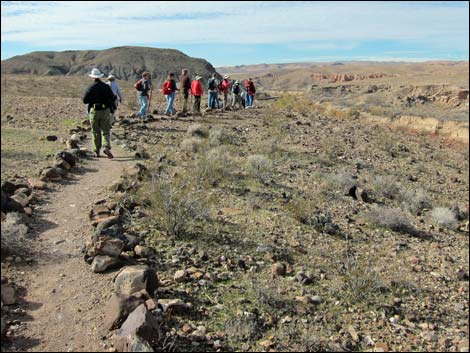 |
Class 1: No hands. Class-1 is walking down a trail. The trail might be steep and rocky, but you could do it with your hands in your pockets while whistling a happy song. [more photos] |
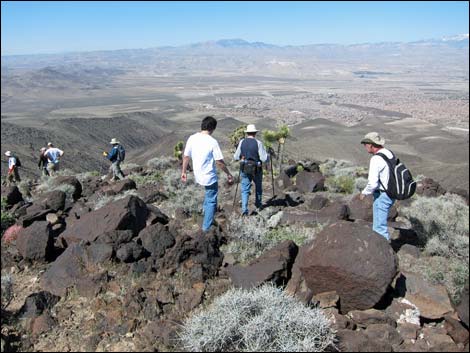 |
Class 2: Occasional hands, no fall. Class-2 is boulder hopping. The route might be a rocky wash or a rocky ridge, and you would occasionally use your hands to steady yourself while whistling a winded, but happy song. [more photos] |
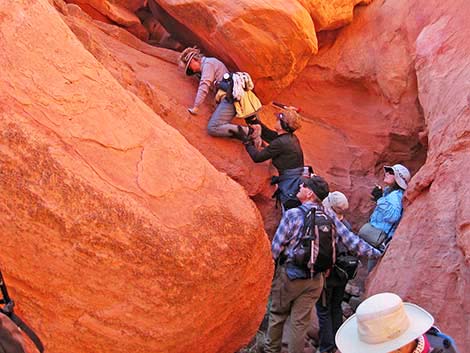 |
Class 3: Hands, short fall. Class-3 is easy climbing. The route might be steep terrain or rocky outcrops where you need your hands. There would be lots of large handholds, and while Class-3 is easy and you wouldn't fall, a fall none-the-less would be short and result in injury but not death. You wouldn't do it with your hands in your pockets, but you probably wouldn't want a rope either, and you still might whistle a happy song (at least after you got over the outcrop). [more photos] |
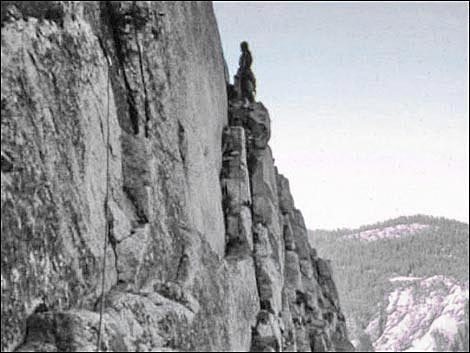 |
Class 4: Hands, long fall, maybe ropes. Class-4 is easy climbing over steep, exposed terrain where you need your hands. There would be many large handholds, and while you probably wouldn't fall on Class-4, a fall none-the-less would be long and would result in great injury or death. You wouldn't do it with your hands in your pockets, you might want a rope (especially for a down-climb), and you might be a bit too puckered up to whistle a happy song. [more photos] |
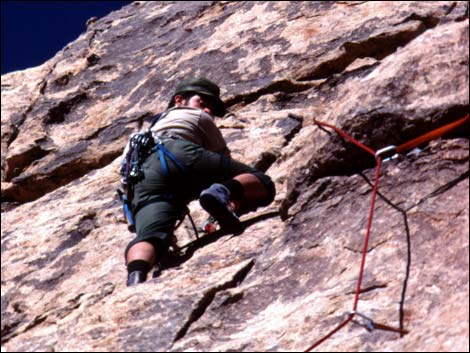 |
Class 5: Hands, long fall, ropes for safety only (climb using hands and feet on the rock). Class-5 is serious rock climbing with ropes, but you don't hang on the equipment or use it to pull yourself up the rock. There could be handholds, maybe not, and they wouldn't always be where you needed them most. You probably would fall on Class-5, and the fall would be long and result in sudden death unless your belayer saved your life with the rope. You wouldn't do it with your hands in your pockets, you would want a rope, and you would be a bit too puckered up to whistle a happy song. Class-5 climbing often is referred to as "free climbing," and climbing 5th-class routes without a rope often is referred to as "3rd-classing the route" (climbing as if it were 3rd class and you didn't need a rope). [more photos] Class-5 is graded according to the technical difficulty: Under the American system (Yosemite Decimal System):
|
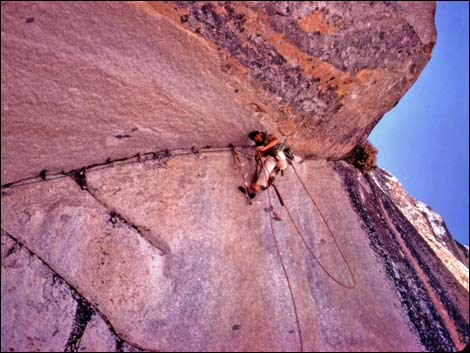 |
Class 6: Hands, long fall, ropes, climb using equipment. Class-6 is serious rock climbing with ropes where you hang on your equipment and use it to pull yourself up the route. Class-6 climbing often is referred to as "aid climbing" because you use your equipment to "aid" in your ascent. There are not necessarily any handholds. You might fall on Class-6, and the fall could be long and result in sudden death unless your belayer saved your life with the rope. You wouldn't do it with your hands in your pockets, you would want a rope, and you might be so puckered up that you wouldn't even be thinking a happy song. [more photos] Class-6 is graded according to the technical difficulty of setting the equipment and the length of the potential falls (using "A" as an abbreviation for "Aid"):
|
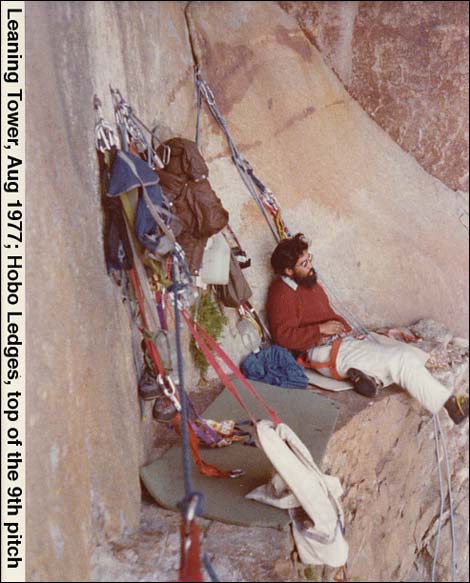 |
In the U.S., Grade refers to the length of time that it normally takes to complete a route. Grades range from I (a short walk) to VI (three or more days on the route). Grade is not directly related to technical difficulty, as you can do an expedition-length route on a well-maintained trail or an exceptionally difficult aid-climbing route under a boulder, but harder routes tend to take longer and tend to have higher grades. Keep in mind that a beginner might take all day on a Grade-II route, while a Grade-VI climber might jog a Grade-IV before lunch.
|
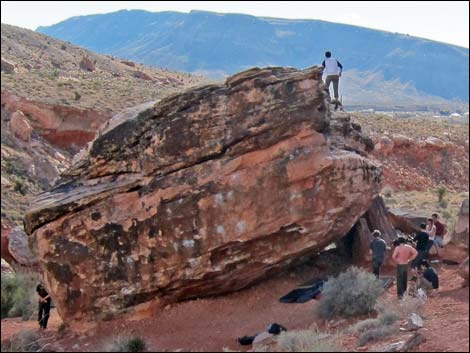 Bouldering at Red Rock Canyon NCA |
Bouldering is a type of rock climbing done without the use of a rope or harness in which climbers often don't go higher than 20 feet. During the infancy of rock climbing, bouldering was mainly a way to train for longer routes. In the past couple decades, however, bouldering has grown into its own sport. Bouldering grades convey difficulty. There are two main grading systems, but in the U.S., the "V Scale" is most commonly used. The V Scale syntax is simple: a grade is indicated by the capital letter "V" followed by a number. For example, V0, V3, and V10 are all bouldering grades. Like many other climbing rating systems, the higher the number on the V Scale, the more difficult the boulder problem. The scale starts at V0 and goes up from there. It is open-ended but currently maxes out at V16. For a more complete overview of bouldering grades, check out this article by Alex Beale. |
||||||||||
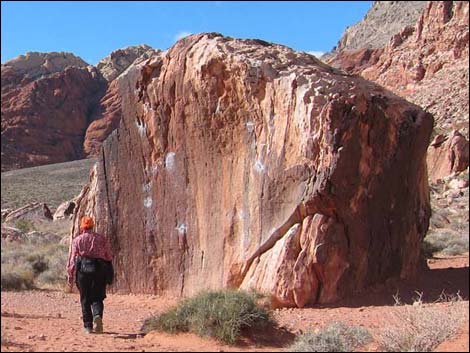 Hiker approaching a bouldering problem |
V Scale
|
Happy hiking! All distances, elevations, and other facts are approximate.
![]() ; Last updated 240323
; Last updated 240323
| Hiking Around Las Vegas | Glossary | Copyright, Conditions, Disclaimer | Home |